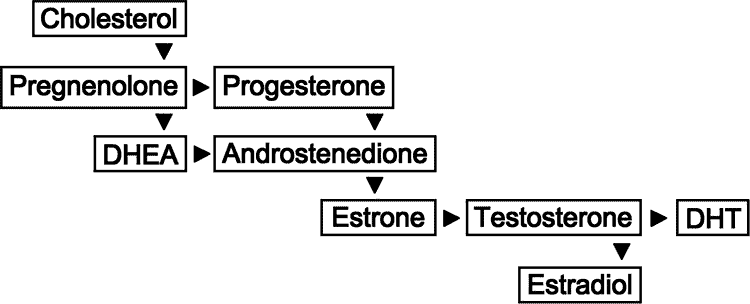[toc]As an herbal remedy, using these and black currant oil for hair growth are not new concepts.
The story starts with a man who at one time, was #212 on the list of the richest people in the UK.
The year was 1996 and the man was David Horrobin, founder of Efamol, which researched and sold evening primrose oil throughout the 80’s. Later renamed Scotia Pharmaceuticals, the company IPO’d on the London Stock Exchange in 1993 and three years later, it was worth a whopping £600m.
Now that was the climax. Wait ’til you hear what happened before and after.
Their primrose oil was being sold in more than two dozen countries, including the United States as an herbal supplement. It was being marketed as a treatment for PMS, eczema, arthritis, and a whole slew of diseases. The FDA eventually had to block import of the oil and for good reason; it had not been proven using approved FDA trials to work for any of these things.
To be clear, the high value of the company was not based on the relatively small amounts of revenue from supplement sales. Rather, it was the promise of prescription drugs which were being developed. Many made use of evening primrose extract.

Ultimately, all of them failed. David Horrobin was ousted in 1997 and died six years later. The legacy he left behind was mixed.
The patents filed
From the records we could locate, none of the failed drugs which were being developed by Scotia had anything to do with hair regrowth. However, among Horrobin’s many patent filings, a couple address the subject.
European Patent Office Application #EP19790300079 (1):
Pharmaceutical and dietary composition comprising gamma-linolenic acids
Within the 19 claims of the application, number 6 says this…
“A pharmaceutical or dietary composition for use in the treatment of psoriasis, acne, dandruff, eczema, or hair loss (other than that due to inherited male pattern baldness). comprising y-linolenic acid or physiologically functional derivative thereof…”
The typical strategy with patent filings is to throw everything in – the kitchen sink and all – in case it might be useful later.
For example, if you were pursuing a novel compound you thought might work for acne, in your filing, you might list dozens of other diseases too… just in case it was found to be useful for one of them down the road.
So just because the topic of hair is listed in claim 6, it doesn’t necessarily mean it was believed to work for that purpose.
1981 was the year that patent was filed. Later on in 1989, Horrobin and his cohorts filed one which was directly about using evening primrose oil for hair growth:
European Patent Office Application #EP19880307363 (2):
Treatment of male pattern baldness and of unwanted hair growth
Even though the patent was filed, based on the records it doesn’t appear to have ever been developed or sold for that purpose.
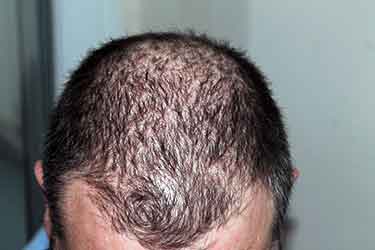
So clearly, Scotia was busy with many things. Their public pipeline of some two dozen or so drugs were focused on other conditions and diseases, like Tarabetic for diabetic nerve damage (which was rejected in 1997).
One of the things we could not find in any of Horrobin’s patents was using evening primrose oil for thyroid function. While totally unproven, it is one of the purported benefits touted by some in naturopathic medicine. You often hear about them using it in support of an underactive thyroid gland (hypothyroidism). Ironically, some of them claim the opposite, that instead it’s good for overactive thyroid (hyperthyroidism).
While not in the United States, Scotia’s products were legally approved for one disease, albeit briefly.
For a few years, Scotia was able to sell their evening primrose for eczema in the United Kingdom, however their Medicines and Healthcare Products Regulatory Agency (MHRA) terminated that license in 2002 after a “review of all the relevant information, including new studies” found it to be ineffective (3).
What is gamma-linolenic acid (GLA)?
Linoleic acid (LA) is a polyunsaturated omega 6 fatty acid.
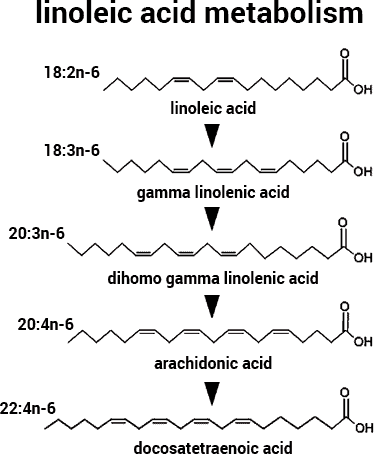
Some people confuse GLA with conjugated linoleic acid (CLA), which is another rare form of omega 6. They are completely different. Enhanced CLA safflower oil has been heavily marketed during the last decade for weight loss benefits.
The difference with CLA is that there have actually been a fair number of clinical studies done to support the idea of it for dieting purposes. There is not research to support gamma linolenic acid for weight loss.
It was this GLA in evening primrose oil which Scotia Pharmaceuticals had tried to commercialize unsuccessfully for over a decade.
It is also the same active ingredient which is being touted today by some herbal enthusiasts, as a purported remedy for thinning hair and even male pattern baldness. But is there any research at all to even suggest such benefits might be possible?
Research about GLA for hair growth
It turns out there have been some legit scientific studies done on this topic. However that does not mean GLA works for thinning hair or going bald. The body of research on these topics is so incredibly small, you really can’t conclude anything based on them. It is completely unproven for these purposes.
That being said, the studies done on it are intriguing. Here is a review of the relevant scientific research.
The DHT studies
Propecia (finasteride) is the only orally consumed treatment for male pattern baldness which is approved by the FDA.
How Propecia works is by inhibiting the 5-Reductase enzyme. This enzyme is found in small amounts in both men and women. It converts testosterone to dihydrotestosterone (DHT).
While the exact reason why is unknown, high levels of tissue DHT – such as in the scalp – tend to correlate with hair loss in men.
By reducing the tissue DHT level with Propecia, many men are able to slow down the progression of their balding. The prescribed 1 mg daily dosage can lower the amount by as much as 60%.
Being that female pattern hair loss (FPHL) is quite uncommon in comparison, not much research has been done on using DHT blockers for it.
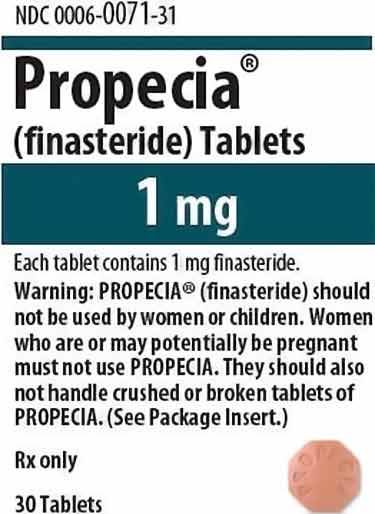
So finasteride – or the blocking of DHT – seems to not work for women. Or if it does, it’s not like the huge benefit it can have on male pattern baldness.
Even if it did work for women, the use Propecia by females may not be safe. It has not been adequately studied for safety during pregnancy or even in non-pregnant women.
Some men experience side effects from Propecia – including lack of sexual libido – and it is not known what exactly the effects are in women.
What does any of this have to do with borage oil? Or other sources of gamma-linolenic acid like evening primrose and black currant oil?
Because they might also block some production of DHT.
Study: Androgen action: molecular mechanism and medical application (5)
Year: 1994
Authored by the late biochemist and University of Chicago professor emeritus Shutsung Liao, this was the first published paper which looked at the effects 5 alpha-reductase may have on prostate cancer, acne, baldness, hirsutism (excess hair on women), and other conditions. One of the paper’s primary points was that:
“Certain unsaturated fatty acids, such as gamma-linolenic acid, are potent 5 alpha-reductase inhibitors, suggesting a linkage between unsaturated fatty acids and androgen action.”
He also wrote about the effect in 1992, but without mentioning hair in the abstract (6).
Study: Growth suppression of hamster flank organs by topical application of gamma-linolenic and other fatty acid inhibitors of 5 alpha-reductase (7)
Year: 1997
Dr. Shutsung Liao also led this study.
The flank organs (scent glands) in hamsters have been used in medical research because their growth is dependent on androgen. Therefore, it’s used as a gauge to measure how much of an effect a given chemical may have on androgen-dependent responses of the skin, including the hair follicles. The abstract claims:
“The effect of gamma-linolenic acid is localized at the site of its application; topical application of gamma-linolenic acid did not affect the androgen-dependent growth of other organs such as testis, epididymis, seminal vesicle, and prostate. gamma-Linolenic acid, with low toxicity and absence of systemic effect, therefore may be potentially useful for treatment of androgen-dependent skin disorders.”

In other words, it was found to inhibit the 5 alpha-reductase at the location it was topically applied (the flank organ) without seeming to have a noticeable effect elsewhere in the hamster’s body, such as the testicles, prostate, and other organs.
That is a problem with finasteride (Propecia) because it does have sexual side effects in many men.
In fact, finasteride is the exact same active ingredient as the prostate medication, Proscar. The latter is a 5 mg dosage of it, while Propecia is 1 mg.
But then again, finasteride is taken orally and this study looked at the topical application of GLA on the skin.
Some websites cite this as a review of evening primrose oil for hair growth, but the focus was on the GLA and not pitting one source of GLA over another. But most importantly, how relevant or not the hamster flank organs are to human biology is highly debated. It’s totally ridiculous that some cite this study as proof that a GLA source like borage oil works in humans.
Title: Inhibition of type 1 and type 2 5alpha-reductase activity by free fatty acids, active ingredients of Permixon (9)
Year: 2002
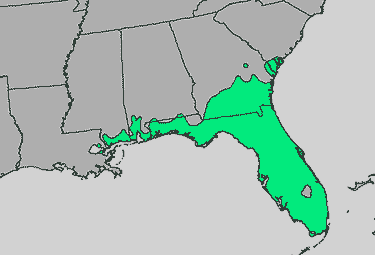
Conducted at a university in Paris, this study looked at the brand Permixon, which is a decades old natural treatment sold overseas for treating symptoms associated with benign prostatic hyperplasia (BPH).
Permixon is basically 160 mg capsules of Florida palm (Serenoa repens) extract, which is better known as saw palmetto.
At first glance, this study has no relevancy to male pattern baldness, let alone borage oil and GLA sources. However what’s interesting and might be of some relevance is that the findings suggest it is certain fatty acids in saw palmetto which are responsible for its purported BPH benefits:
“The dual inhibitory activity of LSESr on 5alpha-reductase type 1 and type 2 can be attributed to its high content in free fatty acids.”
Is there GLA in saw palmetto? No, or if there is any, it is only in trace amounts. The fat profile of saw palmetto oil, in terms of concentrations, looks like this (10)…
| Lipid Profile of Saw Palmetto Extract (Permixon) | |
|---|---|
| Type | Percentage |
| Free fatty acids | 88.7 |
| Oleic | 40 |
| Lauric | 32 |
| Myristic | 13 |
| Palmitic | 10 |
| Linoleic | 5 |
| Fatty acids methyl and ethyl | 4.5 |
| Triglycerides | 1.2 |
| Long-chain esters | 1.1 |
GLA is not on that list. However why this study might be relevant to the topic of borage oil and others is that it suggests certain types of free fatty acids might reduce how much DHT gets converted from testosterone.
It’s interesting to note that some alternative medicine followers use saw palmetto and evening primrose oil together. Some use saw palmetto vs. Propecia, in hopes of it being a natural herbal remedy for hair loss versus the prescription.
For women, rather than for the goal of blocking DHT, you read about some claiming to use primrose for thyroid related hair loss.
Though to be clear, none of these herbs or oil extracts have been clinically proven for any of these purposes. Their efficacy and safety has not been established and therefore, they are not approved for the treatment of thinning hair or to regrow that which is lost, whether from thyroid problems, DHT, or something else.
Title: 5 alpha-reductase-catalyzed conversion of testosterone to dihydrotestosterone is increased in prostatic adenocarcinoma cells: suppression by 15-lipoxygenase metabolites of gamma-linolenic and eicosapentaenoic acids (8)
Year: 2002

- 80% reduction of DHT from 5 alpha-reductase with the 15-lipoxygenase metabolite of GLA.
- 55% reduction with the 15-lipoxygenase metabolite of EPA.
- For both, their precursor fatty acid forms showed “moderate inhibition” of DHT production.
While this study had nothing to do with hair loss, it did suggest that it there is a specific metabolite of GLA which appears to be responsible for inhibiting the DHT production in rats.
Title: The extract of Thujae occidentalis semen inhibited 5alpha-reductase and androchronogenetic alopecia of B6CBAF1/j hybrid mouse (11)
Year: 2003
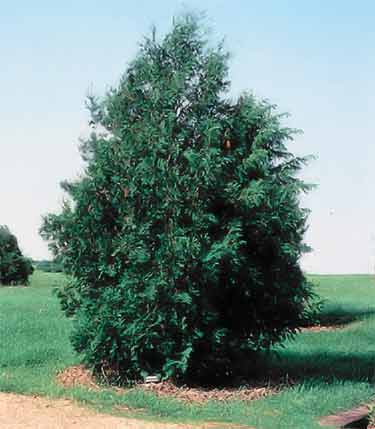
At the R&D center of a South Korean company, thujae along with numerous other plant extracts were screened and tested to see if they block 5 alpha reductase type 2 activity.
One of the plant extracts was gamma linolenic acid, but it is not clear whether its evening primrose oil vs. borage oil or another source. In addition to the plants, they tested finasteride (Propecia) for comparison.
This too was only an animal study, in which the compounds were topically applied to rodents for 6 weeks. They based their results on the before and after measurements of:
- Sebaceous gland – The glands in the skin which secrete oil into the hair follicle.
- Sebum – This is the stuff which comes out of sebaceous glands.
These criteria were chosen because they were believed to be signs of activity for 5alpha-reductase type 2.
The results? Thuja occidentalis and GLA were said to be type 2 5 alpha reductase inhibitors in the tested animals, although to a lesser extent than finasteride.
Title: Effect of dietary supplementation with omega-3 fatty acid and gamma-linolenic acid on acne vulgaris: a randomised, double-blind, controlled trial (12)
Year: 2014
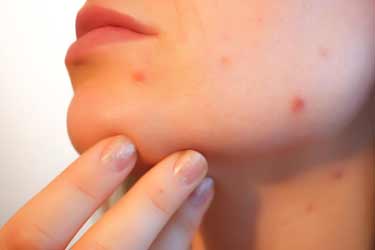
So why bother to even bring it up? Because:
- It involved living humans, not rodents or cell cultures.
- Borage oil side effects were reviewed.
- DHT is mentioned. Only once though, in the introduction, while discussing possible causes of acne. Dairy foods were on theory listed, because they contain androgens such as DHT.
In short, this study has nothing to do with losing hair. It is looking at whether the anti-inflammatory effects of omega 3’s and the omega 6 GLA work for acne, which in theory at least, might provide a clue if anything is happening in the skin from eating these fatty acids. The research was conducted by the Department of Dermatology at Seoul National University.
In total, there were 45 people who participated; 36 men and 9 women. They ranged in age from 18 to 33, with the average being 23.7 years.
The supplemental use of the borage oil for acne over the 10 week trial seem to show significant improvement.
Both inflammatory and non-inflammatory lesions were improved, as well as overall acne severity.
The GLA group was given a twice daily dosage of a borage oil supplement. Each of the two capsules contained 200 mg of GLA (1,000 mg total of borage oil in them).
As far as side effects, the omega 3 group actually experienced more. The only adverse reaction reported in both groups was mild gastrointestinal discomfort (2 patients in the omega 3 group, 1 patient in the GLA group). These were said to resolve on their own after a few days without the need for intervention.
The verdict
Sure, there are user reviews on taking evening primrose oil, as well as black currant and borage, for hair health. However in terms of scientific reviews, there are only a few laboratory experiments and no directly related studies involving humans.
Given the crash and burn story of Scotia Pharmaceuticals from the 90’s, it’s no surprise that there has been almost zero formal research on gamma linolenic acid since then, whether for hair loss or anything else.
And who can blame ‘em?

Why would he do that? It might have been because his compensation agreement involved a 1/2 percent royalty on futures sales, if approved. That type of arrangement is practically unheard of in pharma for the doctors conducting clinical trials, who are supposed to be as neutral as possible.
And before all that, remember the company got in trouble in the U.S. for allegedly trying to circumvent a ban of their supplements, which were being illegally marketing as a treatment for various diseases.
In short, given the tumultuous history of GLA, it’s no surprise no one wants to touch it with a ten foot pole.
Then is it a scam?
For many diseases, the evidence seems to be quite strong that GLA does not work. Remember, that company spent the equivalent of hundreds of millions of dollars trying to develop it for over a decade, without success.
That being said, there is almost no research about it for male pattern baldness. Does evening primrose oil work for hair loss if applied to skin directly, or any of the other sources? No one can claim that benefit, since human studies have not been done to find out.
Yes, some very preliminary laboratory research suggests that sources of GLA in food might help to block DHT from being made, but it remains an unproven theory.
Highest natural sources of GLA
As mentioned, gamma-linolenic is found in very few foods. Here’s a rundown of how much GLA is in borage and the other types of oil it is found (14) (15).
| Natural Sources of Gamma-linolenic Acid | |
|---|---|
| Food/Supplement Source | Amount of GLA |
| Borage oil | 18-26% |
| Cassis / black currant seed oil | 15-20% |
| Evening primrose oil | 7-10% |
| Hemp seed oil | 1-4% |

When you compare black currant seed oil vs. borage oil, can you really claim the latter is the best source since it contains more GLA? Maybe not.
One dangerous side effect of borage is that it contains small amounts of a toxic substance known as amabiline. This is a pyrrolizidine alkaloid (PA) which is poisonous to the human liver. In fact, it’s a suspected carcinogen (16). It’s one of the reasons borage supplements in particular can be bad for you in excess, unless they are labeled PA-free
Farting, burping, diarrhea, and headaches are possible side effects of black currant oil. Though fortunately, the reviews which mention them seem to be few and far between.
Those are also some of evening primrose oil side effects. One in particular which is often associated with primrose is a possible drop in blood pressure. Many consider that a benefit, but it can be quite dangerous for those on blood pressure lowering medications or people who already have low numbers to begin with.
Dosage for hair loss
It’s important to stress this is not an endorsement or promotion of these oils, but rather a reporting of what some people are doing. If you are interested in using it, you should consult your doctor before doing so. Remember all sources of GLA are completely unproven for this use.

For black currant oil supplements, an even higher dosage is used to obtain the equivalent amount of GLA. That works out to be around 1,700 mg of the pure oil.
For evening primrose oil capsules with maximum potency, to get the same amount of GLA the math works out to be 3,400 mg of the oil. Using primrose to allegedly restore thyroid function and promote hair regrowth is a story you occasionally see on forums and blogs, but that too is unproven. There are no scientific studies to suggest that benefit.
How much gamma linolenic there is in hemp oil can be as low as 1%. Getting around 300 mg from that source would require excessive consumption.
Some people choose to apply the oils topically instead, by massaging it directly onto the scalp. Since people have different skin sensitivities, this is something you should consult a dermatologist before trying.
Hair products with GLA in them
There are a handful of hair care products made with borage oil and/or the other sources already mixed in. To be clear, we are not endorsing these products, but simply reporting on which ones appear to be popular.
- Revivogen serum, shampoo and conditioner value pack
- ShiKai Borage lotion
- 100% pure black currant seed oil
These statements have not been evaluated by the Food and Drug Administration. This product is not intended to diagnose, treat, cure, or prevent any disease.


